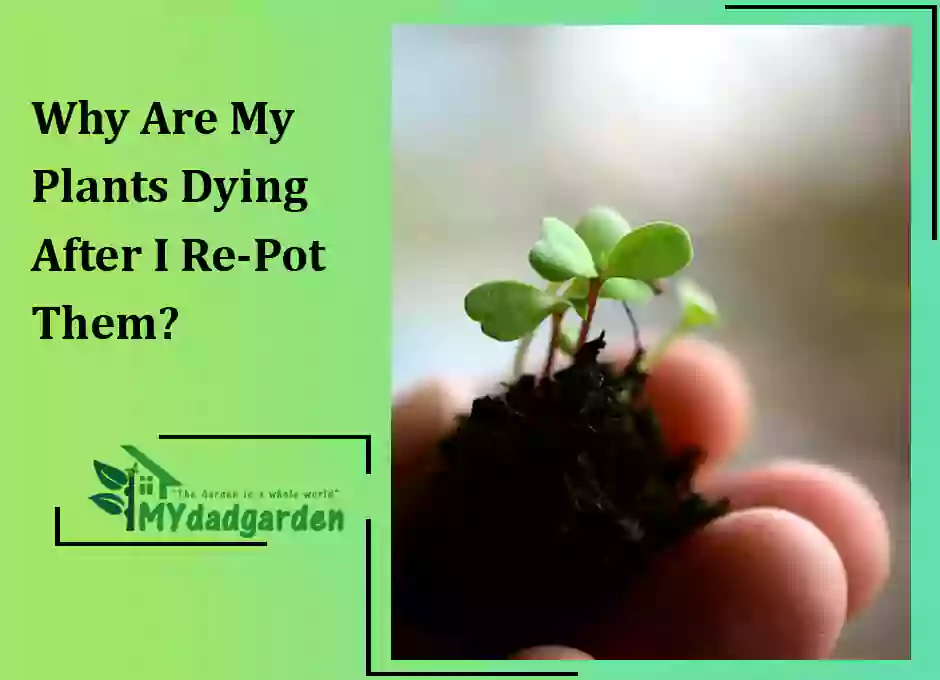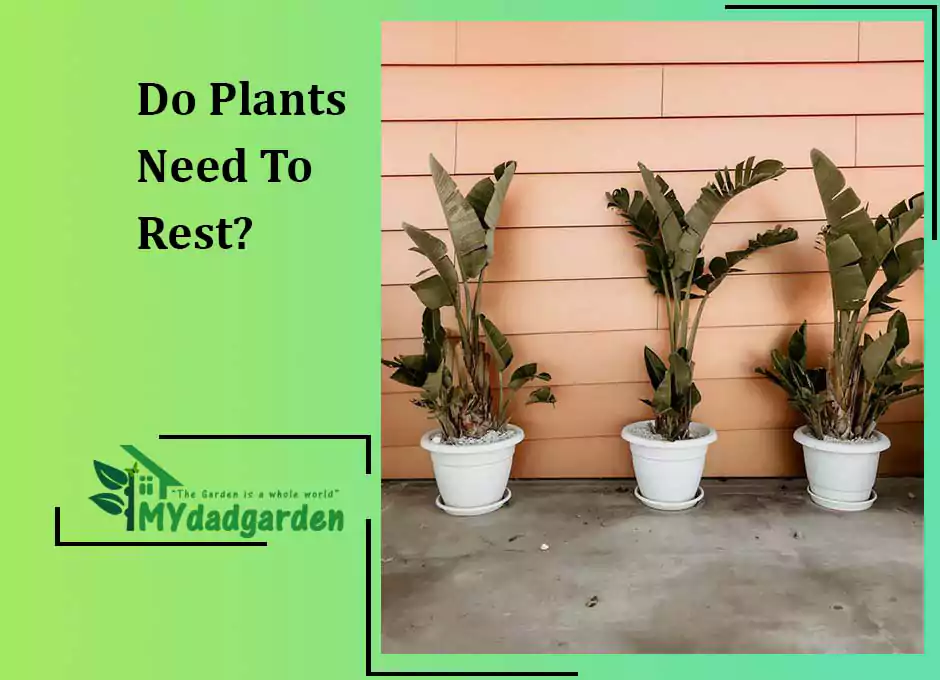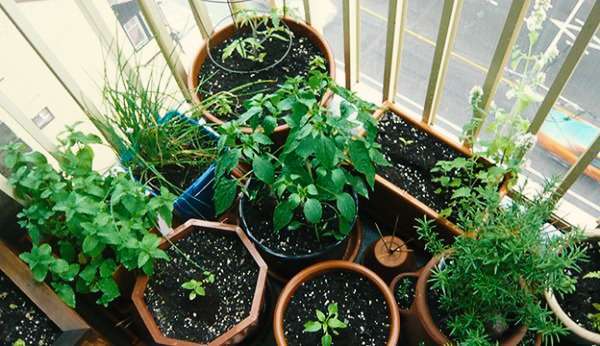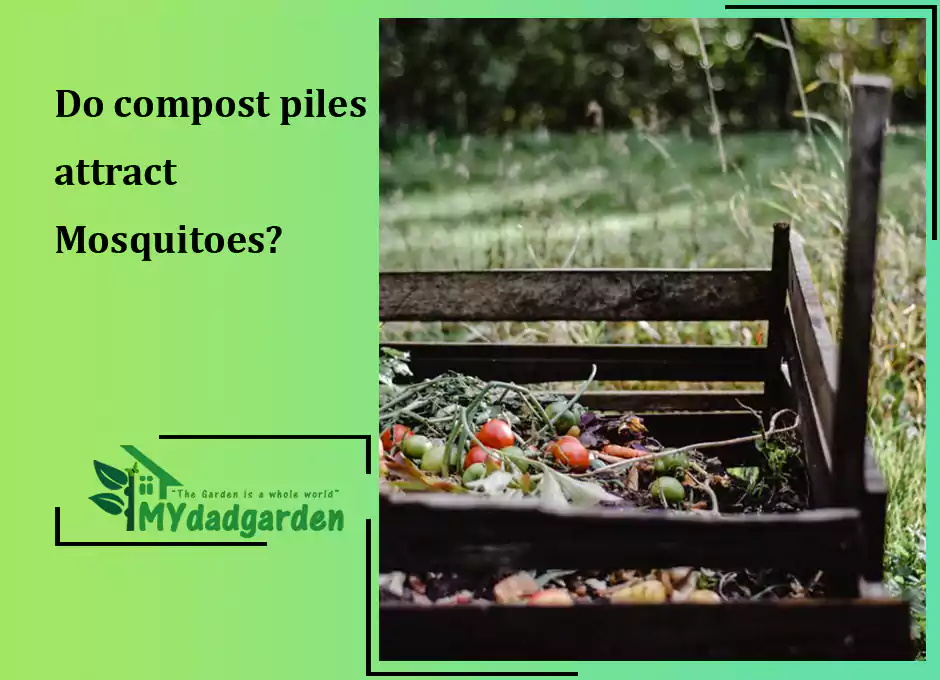Why Are My Plants Dying After I Re-Pot Them?
One of the most common questions is, “Why are my plants dying after I repot them?”
There could be several reasons why this is happening, so it’s important to troubleshoot and figure out the problem. In this blog post, we’ll explore some of the possible causes of plants dying after being repotted and offer some tips on how to prevent it from happening.
Table of Contents
Why Are My Plants Dying After I Re-pot Them?
Moving a plant to a new pot gives it a fresh start with new soil, water, and nutrients. But sometimes, despite your best efforts, your plant will start to die soon after you re-pot it. Why does this happen, and what can you do to prevent it?
There are a few reasons your plant might die after you re-pot it.

Pot Mix
The first thing to consider is whether or not you’re using the right type of potting mix. Using a potting mix that doesn’t drain well could cause your plants to become waterlogged and eventually die. Be sure to use a mix that contains perlite or another type of drainage material to ensure proper drainage.
Broken Roots
When repotting a rootbound plant, it’s important to be gentle when breaking up the roots. You don’t want to damage the roots, leading to the plant dying. Instead, gently loosen the roots with your fingers and then replant the plant in a fresh potting mix.
Watering
It’s also important to ensure you’re not over or under-watering your plants after repoting them. If you’re overwatering, the roots can become waterlogged and suffocate the plant. On the other hand, if you’re underwater, the roots will dry out, and the plant will die. Check the soil regularly and water only when the top inch or so is dry.
Light
Finally, it’s possible that you’re not giving the plant enough light. Most plants need at least six hours of sunlight a day, so if you’re not giving it enough light, it will start to die.
How To Save A Dying Plant After Repotting?
If you think your plant is dying for one of these reasons, there are a few things you can do to save it.
First, try to identify the problem and then take steps to fix it. For example, if your plant is getting too much water, try moving it to a spot with less sun or watering it less often. If you think it’s not getting enough light, try moving it to a spot that gets more sun.
If you can’t figure out what’s wrong with your plant, or if it continues to die despite your best efforts, you may need to start from scratch and get a new plant. Sometimes, no matter what you do, a plant won’t thrive in its new home. When this happens, starting over with a new plant is best.
When you re-pot a plant, it’s important to do it correctly so that your plant doesn’t die. Here’s how to save a dying plant after repotting: It’s important to replant your plant in the same size pot or a slightly larger one. If you replant in a pot that’s too large, the roots will have too much space, and the plant will be more likely to die.
Make sure the new pot has drainage holes. If it doesn’t, the plant will sit in water, and the roots will rot.
Use fresh potting mix. Don’t use the old potting mix from the previous pot – it will be compacted and won’t have the necessary nutrients for the plant.
Water the plant well after replanting. Be sure to water it slowly and evenly so that the roots have time to absorb the water.
If you follow these tips, your plant should thrive after being replanted.
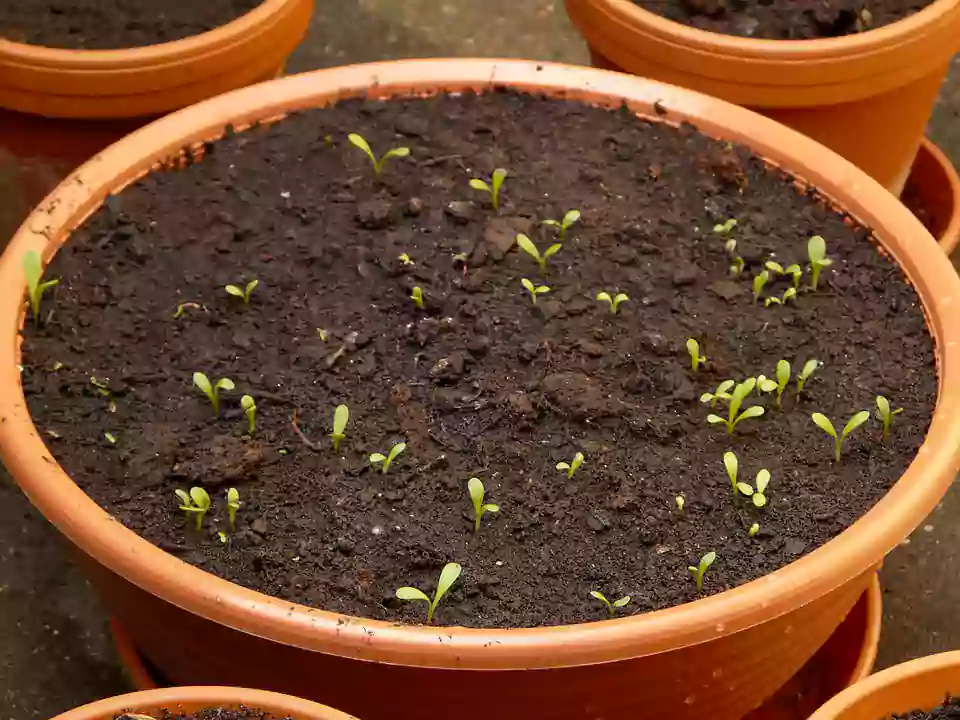
Root Rot After Repotting
We’ve all been there. You’ve just re-potted your plant, which looks a little sad. The leaves are wilting, the stems are drooping, and the roots are rotting. What gives?
Your plant is likely suffering from root rot, a common problem that can occur when plants are repotted. Root rot is caused by a build-up of water in the soil, which can happen when the plant is overwatered, or the pot doesn’t have adequate drainage.
If you think your plant might be suffering from root rot, you can do a few things to help it recover.
First, make sure you’re not over-watering it. Water your plant only when the soil is dry to the touch.
Second, improve the pot’s drainage by adding a layer of gravel or rocks to the bottom. Finally, give your plant some time to recover. With a little TLC, it should be back to its old self in no time.
How Long Does It Take For A Plant To Recover From Transplant Shock?
When you transplant a plant, you essentially give it a new home. The plant will need some time to adjust to its new surroundings, and this process is called “transplant shock”. During this time, the plant may wilt, or its leaves may turn yellow. These are normal reactions, and they do not mean the plant is dying.
It usually takes 2-3 weeks for a plant to recover from transplant shock. It is important to give the plant extra care and attention during this time. Water it regularly and make sure that it is getting enough sunlight. Once the plant has recovered, it will return to its normal self!
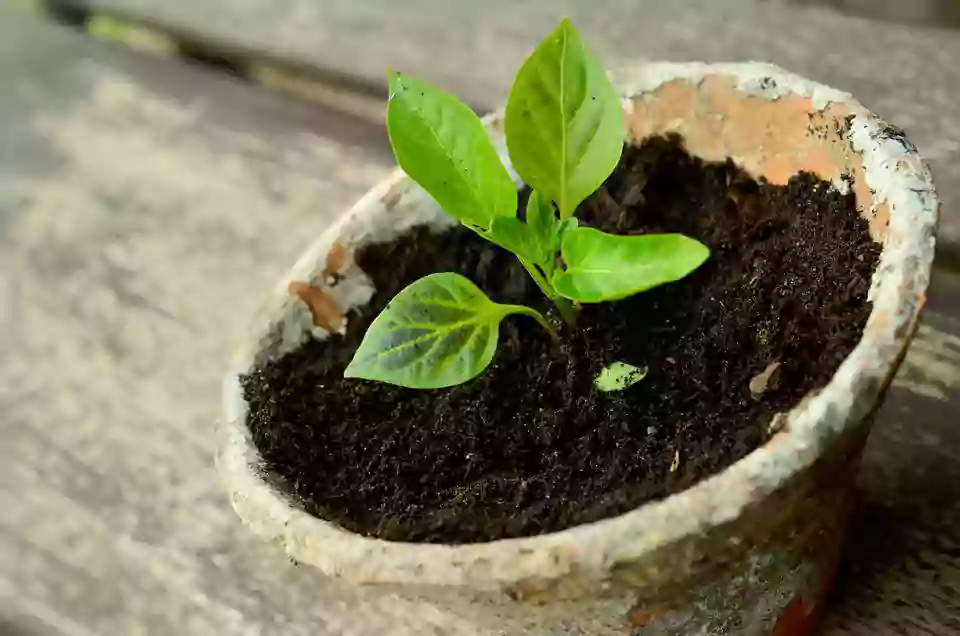
Leaves Turning Yellow After Repotting
When you buy a new houseplant, it’s always a good idea to re-pot it into a one or two size larger pot. This gives the plant room to grow and also allows you to refresh the potting mix. However, sometimes when you re-pot a plant, its leaves will turn yellow. This can be alarming, especially if you’re unsure what’s causing it.
There are a few reasons why this might happen.
One is that the plant is simply adjusting to its new environment. When you re-pot a plant, it’s exposed to different temperatures, humidity, and light levels, which can all cause some stress. The leaves may turn yellow as the plant adjusts, but they should return to their normal color within a few weeks.
Another possibility is that the plant is getting too much or too little water. When you first re-pot a plant, it’s important to water it well, but not so much that the potting mix is soggy. If the leaves turn yellow and drop off, the plant will likely get too little water. On the other hand, if the leaves are yellow and the stem is wilting, the plant is probably getting too much water.
If unsure what’s causing the yellowing leaves, try moving the plant to a different location. If the leaves turn green again, then you know it was probably just a case of the plant adjusting to its new surroundings.
If the leaves don’t turn green, there are a few other things you can try. One is to check the roots. If they’re white and mushy, it’s a sign that the plant is getting too much water. If the roots are brown and dry, the plant is probably getting too little water.

How To Re-pot A Plant Without Killing It
Repotting is a necessary process for keeping our plants healthy. It allows the roots to spread and the plant to absorb more nutrients. But, it can also be a stressful time for our plants.
When we re-pot a plant, we give it a new home. And, just like moving to a new home, it can be a bit overwhelming for them.
Here are a few tips to help your plant through the repotting process:
Choose the right pot
The first step in re-potting your plant is to choose the right pot. It should be big enough to accommodate the roots, but not too big. You don’t want the roots to be cramped, but you also don’t want the pot too heavy for the plant.
Prepare the pot
Before you add your plant to the pot, make sure to add some drainage holes. This will help to prevent the roots from rotting. You can also add some rocks or gravel to the bottom of the pot to help with drainage.
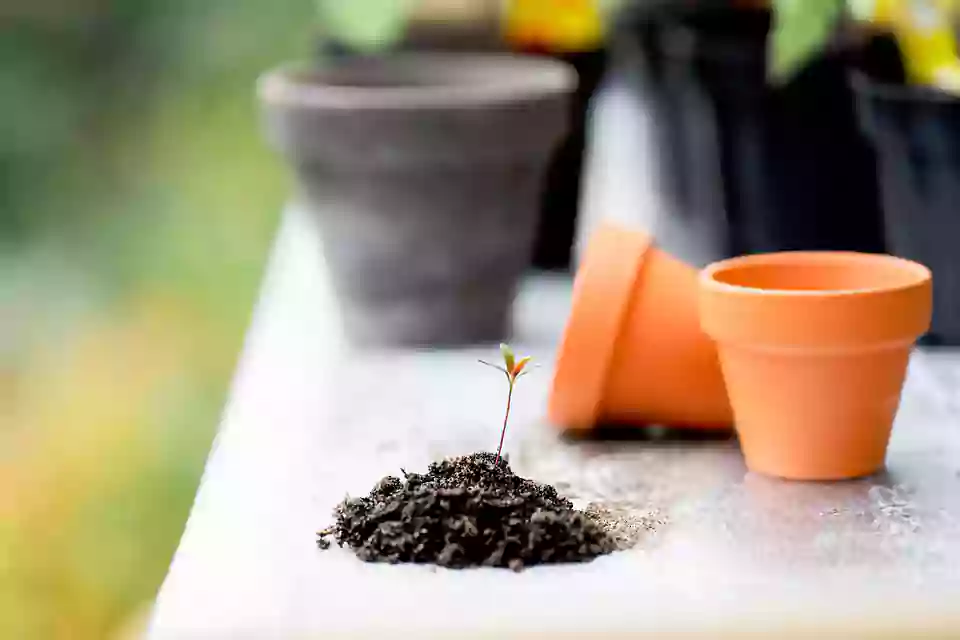
Gently remove the plant from its current pot
Once you’ve chosen and prepared the right pot, it’s time to remove the plant from its current pot. Gently loosen the roots and lift the plant out. Be careful not to damage the roots.
Add the plant to the new pot
Now it’s time to add the plant to the new pot. Fill the pot with potting mix, gently firm it around the roots, and water well.
Place the pot in a sunny spot
Once the plant is in the new pot, place it in a sunny spot. This will help the plant to adjust to its new home.
Repotting can be stressful for your plant, but following these tips will help make the transition a bit easier.
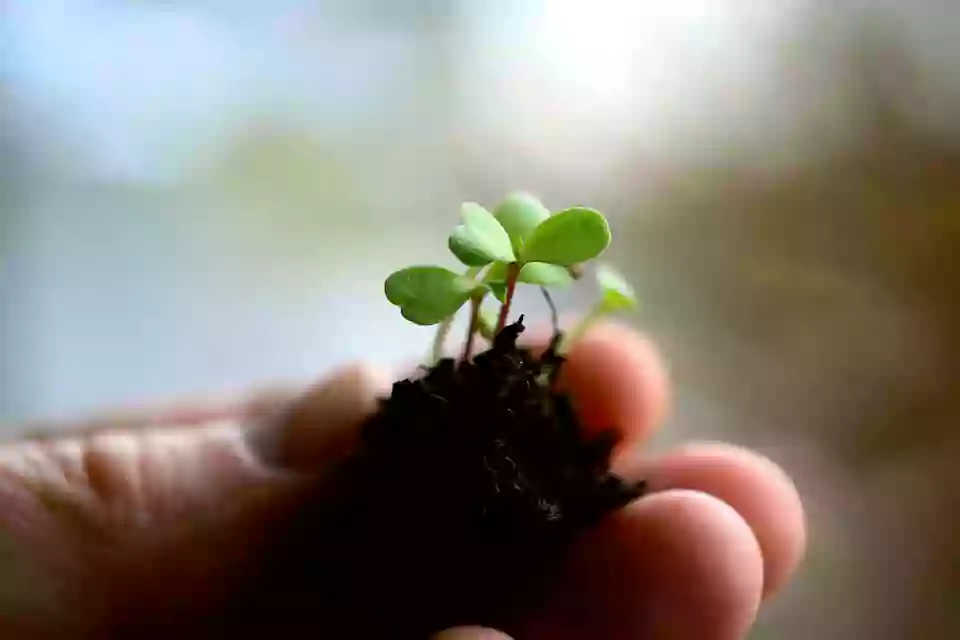
Signs Of Transplant Shock
When you first bring your new plant home, it’s normal to feel like you’re in over your head. After all, you’re responsible for keeping this living thing alive! But don’t worry, we’re here to help. Here are some signs that your plant is in transplant shock and what you can do about it.
Your plant is wilting
One of the first signs that your plant is in transplant shock is wilting. This can be due to several factors: stress from the move, lack of water, or too much sun. If you see your plant wilting, try giving it a drink of water and moving it to a shadier spot.
Your plant’s leaves are drooping
Another sign of transplant shock is drooping leaves. This is usually a sign of dehydration, so give your plant a good drink of water. You may also want to mist the leaves with water to help them recover.
Your plant is losing leaves
If your plant loses leaves, it could signify transplant shock or a more serious problem. If the leaves are yellow or brown, the plant is likely suffering from dehydration or too much sun. If the leaves are green, it could indicate too much water. In either case, try adjusting the amount of water you’re giving your plant.
Your plant is not growing
If your plant seems to have stopped growing, it could signify transplant shock. This is usually temporary, and the plant will start growing again once it has acclimated to its new environment. Be patient and give your plant time to adjust.
If you see any of these signs, don’t despair! Your plant will soon return to its old self with a little care.

FAQ
Does repotting hurt plants?
Repotting a plant is not harmful to it, but it can be difficult. Repotting a plant is moving it out of its existing container and into a larger container. It’s a good idea to re-pot plants frequently, especially if they’re growing in an overcrowded environment or if you’ve recently moved them to a new location. This will allow the plant more sunlight and room to grow, helping it thrive.
Should I re-pot plants after buying?
Repotting can occur anytime, but it should be done before your plant becomes root-bound or develops too many roots. Root-bound plants cannot absorb nutrients from their soil and will die if left in their current pot. Root-bound plants also grow more slowly and may become misshapen.
When repotting a plant, removing as much of the root mass as possible is important, as is filling the new pot with fresh potting soil and plenty of room for the roots to develop. You should re-pot every two years or when your plant outgrows its pot.
Should you water a plant after repotting?
Sometimes, repotting plants can cause problems with the roots and leaves. Watering plants after repotting can damage the roots. Instead, wait until the plant has had a chance to settle into its new container before you water it again.
Do plants go into shock after repotting?
Plants can be stressed by repotting, but it is rare. It has to do with the roots being disturbed and how the roots are anchored in the pot. It is best not to re-pot a plant until it is ready for it. Plants should be repotted every 1-2 years, depending on the container size.
Previous Article:How Fast Does Ajuga Spread?

